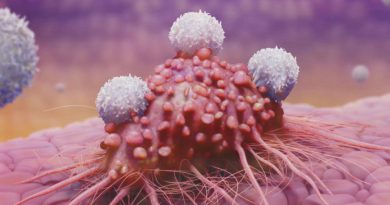82-year-old Woman gets her Memory Back after changing her Diet
Their story is another proof that under the right conditions, our bodies are highly resilient, and a proper diet can teat various types of diseases.
After changing her diet, an 82-year-old woman who suffered from dementia and was not able to recognize her own son has miraculously restored her memory.
When her condition became too severe, her son Mark Hatzer left her in the hospital, and almost came to terms that he has lost her. Her state was really grave, and due to the memory loss and the loss of parts of her mind, she even phoned the police once to accuse the nurse who was caring for her of kidnap.
However, a change of her diet, which was comprised of high levels of walnuts and blueberries, drastically improved her condition.
The mother and son both comprised a diet after they saw that her medication was not enough to treat her dementia. Through research, they found that people in the Mediterranean countries have lower rates of dementia, so they copied their eating habits.
She started consuming healthy foods like oats, kale, broccoli, spinach, sweet potatoes, green tea, dark chocolate, and sunflower seeds, all of which are known to improve brain health.
According to Mirror.co.uk:
Mark, whose brother Brent also died in 1977, said: “When my mum was in the hospital she thought it was a hotel – but the worst one she had ever been in.
“She didn’t recognize me and phoned the police as she thought she’d been kidnapped.
“Since my dad and brother died we have always been a very close little family unit, just me and my mum, so for her to not know who I was devastating.
“We were a double act that went everywhere together. I despaired and never felt so alone as I had no other family to turn to.
“Overnight we went from a happy family to one in crisis.
“When she left the hospital, instead of prescribed medication we thought we’d perhaps try an alternative treatment.
“In certain countries, Alzheimer’s is virtually unheard of because of their diet.
“Everyone knows about fish but there is also blueberries, strawberries, Brazil nuts, and walnuts – these are apparently shaped like a brain to give us a sign that they are good for the brain.”
There were also some cognitive exercises that Mark and his mother would do together like jigsaw puzzles crosswords and meeting people in social situations, Sylvia would also exercise by using a pedaling device outfitted for her chair.
Mark said, “It wasn’t an overnight miracle, but after a couple of months she began remembering things like birthdays and was becoming her old self again, more alert, more engaged..
“People think that once you get a diagnosis your life is at an end. You will have good and bad days, but it doesn’t have to be the end. For an 82-year-old she does very well, she looks 10 years younger and if you met her you would not know she had gone through all of this.
“She had to have help with all sorts of things, now she is turning it round. We are living to the older age in this country, but we are not necessarily living healthier.”
Their story is another proof that under the right conditions, our bodies are highly resilient, and a proper diet can teat various types of diseases.
Additionally, researchers have been warning about the negative effects of aluminum buildup in the brain and its link to dementia and more specifically Alzheimer’s disease, for some time now.
Therefore, it is of high importance to take the needed measures and limit the exposure to this heavy metal as well. The Hippocratic Post website published an article named Strong evidence linking Aluminum to Alzheimer’s, in which Professor Exley explained that:
“We already know that the aluminum content of brain tissue in late-onset or sporadic Alzheimer’s disease is significantly higher than is found in age-matched controls. So, individuals who develop Alzheimer’s disease in their late sixties and older also accumulate more aluminum in their brain tissue than individuals of the same age without the disease.
Even higher levels of aluminum have been found in the brains of individuals, diagnosed with an early-onset form of sporadic (usually late onset) Alzheimer’s disease, who have experienced an unusually high exposure to aluminum through the environment (e.g. Camelford) or through their workplace.
This means that Alzheimer’s disease has a much earlier age of onset, for example, the fifties or early sixties, in individuals who have been exposed to unusually high levels of aluminum in their everyday lives.”
In December 2016, the Journal of Trace Elements in Medicine and Biology published another study titled: Aluminum in brain tissue in familial Alzheimer’s disease, which is highly important, as it is the first time that scientists have measured the aluminum level in the brain tissue of individuals diagnosed with familial Alzheimer’s disease.
The paper showed that the aluminum concentrations found in brain tissue donated by individuals who died with a diagnosis of familial AD were the highest level ever measured in human brain tissue.
Professor Exley wrote:
“We now show that some of the highest levels of aluminum ever measured in human brain tissue are found in individuals who have died with a diagnosis of familial Alzheimer’s disease.
The levels of aluminum in brain tissue from individuals with familial Alzheimer’s disease are similar to those recorded in individuals who died of an aluminum-induced encephalopathy while undergoing renal dialysis.”
He added:
“Familial Alzheimer’s disease is an early-onset form of the disease with first symptoms occurring as early as 30 or 40 years of age. It is extremely rare, perhaps 2-3% of all cases of Alzheimer’s disease.
Its bases are genetic mutations associated with a protein called amyloid-beta, a protein which has been heavily linked with the cause of all forms of Alzheimer’s disease. Individuals with familial Alzheimer’s disease produce more amyloid beta and the onset of the symptoms of Alzheimer’s disease are much earlier in life.”
Furthermore, Dr. Joseph Mercola speaks about other potential factors that contribute to the development of dementia and Alzheimer’s, which we need to consider:
“One of the most striking studies on carbohydrates and brain health revealed that high-carb diets increase your risk of dementia by a whopping 89 percent, while high-fat diets lower it by 44 percent.
According to the authors, “A dietary pattern with relatively high caloric intake from carbohydrates and low caloric intake from fat and proteins may increase the risk of mild cognitive impairment or dementia in elderly persons.”
Studies also strongly suggest Alzheimer’s disease is intricately connected to insulin resistance; even mild elevation of blood sugar is associated with an elevated risk for dementia. Diabetes and heart disease10 are also known to elevate your risk, and both are rooted in insulin resistance.
This connection between high-sugar diets and Alzheimer’s was again highlighted in a longitudinal study published in the journal Diabetologia in January 2018. Nearly 5,190 individuals were followed over a decade, and the results showed that the higher an individual’s blood sugar, the faster their rate of cognitive decline.”
Additionally, even the bodies of Type 1 diabetics do not produce insulin at all, they are still at increased risk for Alzheimer’s. This paradox was investigated in 2016 by Melissa Schilling, a professor at New York University.
The Atlantic reported:
“Schilling posits this happens because of the insulin-degrading enzyme, a product of insulin that breaks down both insulin and amyloid proteins in the brain — the same proteins that clump up and lead to Alzheimer’s disease.
People who don’t have enough insulin, like those whose bodies’ ability to produce insulin has been tapped out by diabetes, aren’t going to make enough of this enzyme to break up those brain clumps.
Meanwhile, in people who use insulin to treat their diabetes and end up with a surplus of insulin, most of this enzyme gets used up breaking that insulin down, leaving not enough enzyme to address those amyloid brain clumps. According to Schilling, this can happen even in people who don’t have diabetes yet — who are in a state known as ‘prediabetes.’”
Therefore, the more the awareness about the causes of neurodegenerative brain disorders grows, the more we can do to treat and prevent them altogether.
Article first published on CollectiveEvolution.com



